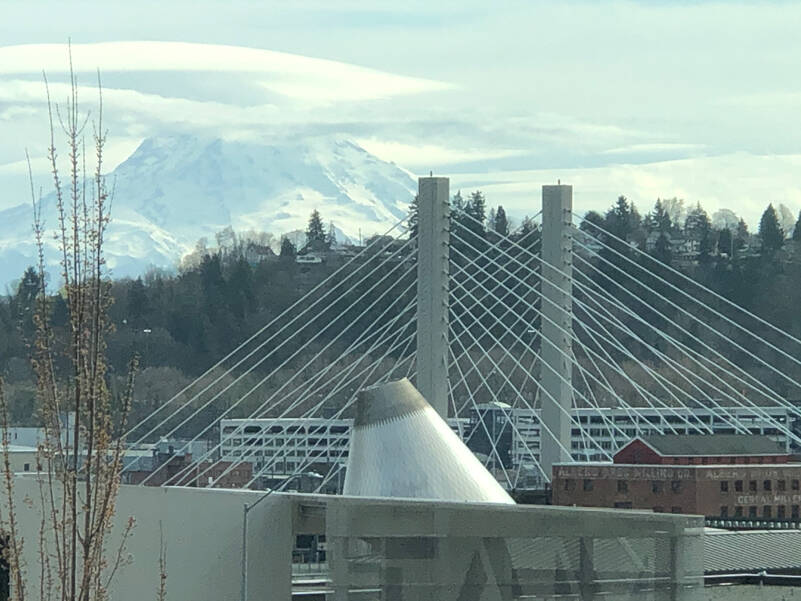By Morf Morford, Tacoma Daily Index
Those who make decisions in our names regarding fuel and toxic waste do the best they can, and earn award after award for caring for the environment.
We, as a region, recycle, restore and reclaim and do our best to clean up the messes left by previous, more careless companies if not entire generations.
Our waterways, atmosphere and school playgrounds are cleaner and safer than ever before.
With nearly endless public events and awards ceremonies we are told that everything is cleaner and safer than it has ever been.
And we want to believe them.
For the most part we desperately want to believe them.
Many of us, as homeowners with older homes (the majority of homes within Tacoma’s city limits were built before or shortly after World War II), made our commitment (or compromise) with environmental issues decades, even generations ago.
Back then, materials were basic – timber and concrete. A few (very few) homes were made out of brick or stone – though some commercial buildings were.
Insulation was essentially non-existent.
Besides building materials being basic (and mostly local), labor was also direct and concrete, and unlike most jobs of the 21st Century, required little to no explanation.
Vocations were simple; a brick-layer laid bricks, a plumber took care of plumbing.
We didn’t have (or need) “project managers” or “associates” or the all-too-common fill-in-the-blank “engineer” – with nothing to do with actual engineering.
People back then would have assumed that a job title like Integration Synchronicity Specialist or Human Relations Specialist were some kind of joke.
(Editor’s Note: Have you noticed that almost every job title today includes a term like “engineer” or “specialist”?)
You might get the impression that these pretentious job titles deserve the exorbitant pay they often get.
But a couple generations ago, most workers didn’t expect a fancy multi-syllable title, or bonuses – or even a safe working environment.
House fires were common back then. As were workplace accidents – even explosions.
I had several uncles with scars or missing fingers related to workplace accidents.
Any “safety” was the responsibility of the worker. Few, if any assumed that work, or home, or school, or even public park, would be safe or clean.
The smell of money
In most of Tacoma’s North End, lead and arsenic was in the soils, asbestos was in (or on) many homes.
The well-known “Aroma of Tacoma” was not a smell – it was a suffocating, near permanent haze that crept through every crevice and window and, like a caustic chemical, literally scorched and choked every living thing.
The advocates of industry back then (and most civic boosters and local politicians) described that lead and arsenic laden pall over Tacoma as “the smell of money”. And it was. For a few.
But for most workers, families and residents, it was the smell of money – as in equity, reputation and opportunity – literally being burned up before their eyes.
For those decades, entrepreneurs, investors, professionals, families, and anyone with any sense, drove past or away from Tacoma as fast as they could.
Tacoma’s economy stalled for decades. Other cities, like Seattle and Bellevue boomed with investors and modern skylines.
Tacoma floundered.
And it was deliberate – in the name of “money” they told us.
You can see the homes of those who made the “money” – mostly in Tacoma’s North End.
A lot of “money” can be made in the toxic exploitation of land, resources and labor.
In other words, it is “money” made at the expense of everything else.
The pulp mills and smelters are, of course, long gone.
Once in a while I hear a young person or newcomer comment on the “aroma of Tacoma” when they get a whiff of some industrial waste.
The “aroma of Tacoma” was no whiff – it was a stench so severe and penetrating that going outside, for days, even weeks, at a time, was a hazard. And the soil itself was saturated with permanent toxins.
That has all changed.
The “aroma of Tacoma” is relic of a distant, less enlightened time.
Now we know better. Or at least we tell ourselves that we do.
In the late 1960s, natural gas pipelines were laid all across Tacoma – and much of North America.
What could better, for users and the environment, than safe and clean heat that seemed limitless, affordable and, best of all, was “natural”?
Those pipelines laid in the 1960s are more than fifty years old now. And they, like everything, need maintenance.
And they leak. You can see the details on inspections and leaks from the Washington Utilities and Transportation Commission here – www.utc.wa.gov/public-safety/pipeline-safety/pipeline-operators-inspected-pipeline-safety-program?.
And “natural gas” might not be as benign as we were told. It turns out that “natural” gas primarily consists of methane, a pollutant more than 80 times as potent as carbon dioxide.
And it all comes from Canada. By pipeline, and train.
More and more research shows that gas appliances in our homes are a significant health threat that produce toxins connected to cancer and increase the risk of children developing asthma.
The “smell of money” still, on occasion, seems to over-ride everything else.
LNG and what could have been the largest methanol plant in the world still, for some, hold an allure (of the financial kind) for some of us who should know better.
We have a beautiful and unique setting, with views and possibilities that are rare and irreplaceable.
Pipelines and warehouses and factories can go anywhere. But what we have here is not like anywhere else.
We need more advocates willing to stand up for more than the profits of an ashen and toxic wasteland, and remind us all of the legacy, history and even destiny that we are building and preparing for the next generation.






